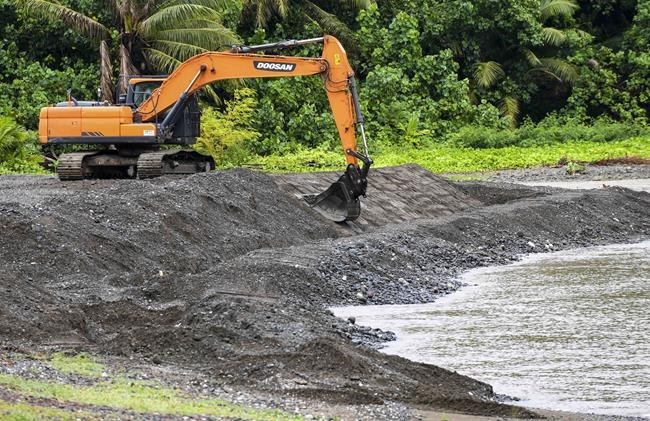HONOLULU (AP) — President Joe Biden approved an emergency declaration as an intensifying Super Typhoon Mawar approached Guam, where anyone not living in a concrete house was warned to seek safety elsewhere and emergency shelters began to fill ahead of what could be the most powerful storm to hit the U.S. Pacific territory in two decades.
Gov. Lou Leon Guerrero said on social media that the declaration will support the mobilization of resources into Guam, which is “especially crucial given our distance from the continental U.S.” Guerrero ordered residents of coastal, low-lying and flood-prone areas of the territory of over 150,000 people to evacuate to higher elevations.
“I anticipate that this situation will be of such severity and magnitude that an effective response will be beyond the capability of the government of Guam and supplementary federal assistance will be necessary to save lives and to protect property, public health and safety and to mitigate the effects of this imminent catastrophe,” Guerrero said in a letter to the president requesting a “pre-landfall emergency” for Guam.
With rain from the storm’s outer bands already falling on the territory, National Weather Service said the storm had been upgraded to a Category 4 “super typhoon,” meaning maximum sustained winds of 150 mph (241 kph) or greater. Its center was about 140 miles (225 kilometers) southeast of Guam late Tuesday local time and was moving to the north-northwest, according to the weather service.
The weather service said the storm was intensifying and warned of a “triple threat” of winds, torrential rains and life-threatening storm surge on Guam. The weather service said the storm could hit southern Guam around midday Wednesday, which is Tuesday evening in the mainland United States. Guam lies to the west of the International Date Line and is a day ahead of the mainland.
If Guam doesn’t take a direct hit, it will be very close, said Patrick Doll, the lead weather service meteorologist in Tiyan, Guam. Doll said the typhoon could cause “extensive damage.”
Guerrero urged residents in a YouTube message to remain calm and ordered the National Guard to help those in low-lying areas evacuate ahead of the storm as residents stocked up on jugs of water and generators.
“Current forecasts are not favorable to our island,” she said. “We are at the crosshairs of Typhoon Mawar. Take action now, stay calm, stay informed and stay safe.”
A storm surge of 6 to 10 feet (2 to 3 meters) above the normal high tide was expected and could reach as high as 15 feet (4 1/2 meters). Surf was expected to build sharply in the next day or two along south- and east-facing reefs, with dangerous surf of 20 to 25 feet (6 to 7 1/2 meters) into Wednesday, the weather service said.
At the island’s grocery and hardware stores Monday, people left with shopping carts full of canned goods, cases of water and generators, the Pacific Daily News reported.
The Rev. Francis X. Hezel, a Jesuit priest and assistant pastor at Santa Barbara Church in Dededo, was trying to visit people at the hospital before it closed to visitors Tuesday.
Before hitting the road, he said, he had trouble finding someone to help him put air in his tires because everyone was busy readying their homes to withstand the storm.
“I live in a rectory,” he said. “I'm just closing the windows hoping that the gusts don't bash them in. Praying for the best, I guess.”
Officials warned residents who aren’t in fully concrete structures to consider moving for safety. Many homes are made of wood and tin.
Rota, an island in the U.S. Commonwealth of the Northern Mariana Islands, was also under a typhoon warning, Doll said. Tinian and Saipan, in the Northern Marianas, were under tropical storm warnings.
Some people in those areas are still in temporary shelters or tents after Category 5 Super Typhoon Yutu in 2018, Doll noted.
“Guam takes a Category 4 or 5 hit every five to seven years. Mother Nature has spared us as of late,” Doll said, adding that the last direct hit was in 2002. “So we are way overdue.”
Typhoon season runs from July 1 to Dec. 15 in the western North Pacific, according to the weather service.
Jennifer Sinco Kelleher, The Associated Press



